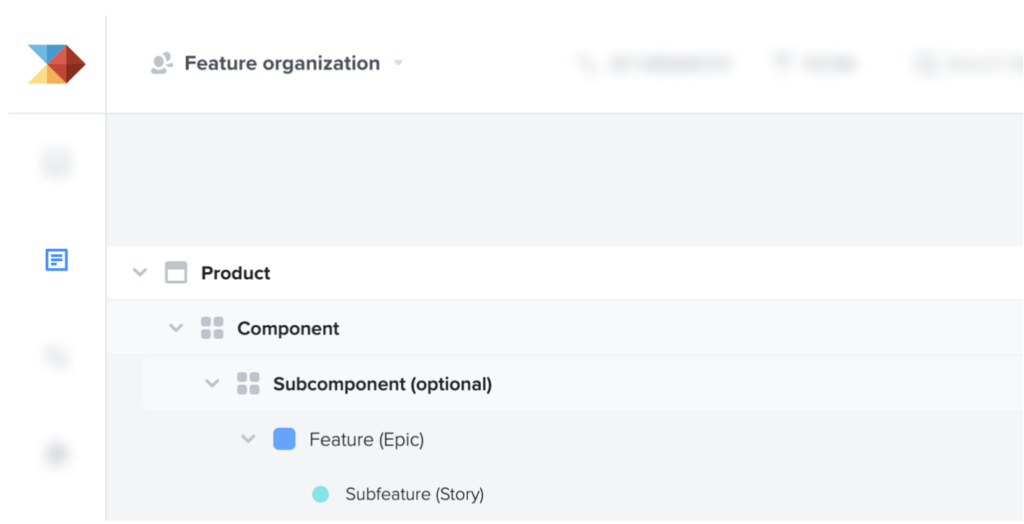The roadmap to a collaborative culture: 5 steps from a product exec

Perhaps his electrical engineering background plays a part, but one thing is clear about Amir Rozenberg: he really likes solving one of the central questions in Product leadership. How do you find new ways to shape an existing product management system — helping teams collaborate even more effectively to solve customers’ problems?
With Product experience spanning infrastructure automation to mobile marketing, Amir starts every new leadership role the same way: identifying improvements to the culture and platforms already in place to best serve end users’ needs.
“I thought from the beginning: what would be massively, mutually valuable for everybody? Finding the point of alignment from which I could change things, to help product managers adopt continuous discovery habits and use them to focus on business outcomes, collaboratively. I saw that the biggest opportunity was the roadmap,” Amir says.
To help others in the industry, Amir is eager to share takeaways from his biggest win yet with Productboard: masterminding an org-wide culture shift that empowered teams at a large B2B software company to build and sell much more efficiently.
Here’s how Amir recommends taking your teams from fragmented systems to collaborative workflows with Productboard.
1. Anchor your teams in the essential: company vision
“Change management” can certainly scare people (even when they’re disenchanted navigating decks, spreadsheets, and emails).

So, Amir recommends:
- Booking time with your department heads and their teams to share the known before you introduce the unknown
- Offer them a refresher course on your company’s vision and related business goals, so you set the stage to reveal your org’s next best step: a real-time roadmap
“If you say, ‘this is my vision,’ what are the drops in time that progress you holistically across the journey? With Productboard, you can look at something on the roadmap, go tap down and figure out: ‘what is the story, what is the business initiative, what is the point in time of delivery?”
2. Help colleagues self-serve info quickly by creating a roadmap with filtered views
Once you cover your company’s vision and how a real-time roadmap can help teams advance the narrative, Amir says it’s time to start curating content. First, bundle up the fine print on features and then create tags that filter the information for internal stakeholders.
“There could be eight features, but when you go into each one, you understand the “TL;DR” — the ‘what are we doing here’ with this feature. You also understand the ‘why,’ the story, and the ‘how’ of the demo, how we’ll pose discovery questions. With Productboard, I can provide this level of detail to the entire organization.”
Amir says customizing roadmap views helps your stakeholders quickly self-serve information, allowing them to connect with customers (and each other) much more effectively.
In his B2B software environment, Amir soon saw teams “increasingly talk to users, sharing what we’re doing here, what we want to deliver, what are the use cases, why do they matter.” From there, the customer-facing account leads and product managers started collaborating “on acceptance criteria, applicability, limitations.”
When cross-functional teams align around product roadmaps, Amir has also seen Sales benefit in a powerful way — by reaching customers with the right story at the right moment.
3. Win deals giving AE’s what they need: a story-driven sales roadmap
Why, Amir thought, burden account executives with technical information when they really need something quite different: stories of transformation? He designed his sales roadmap accordingly to entail:
- Feature release markers with brief write-ups that covered how exactly the product updates would help customers drive results immediately and in the long term, too
- Entries for every upcoming conference or networking event with elevator pitches hyping relevant user benefits based on that moment in time
“You seize on moments of maximal impact, and you phrase the value of what’s on offer. This kept our org working from a motivated and focused perspective, where they understood our focus for the month, and understood what they could say at a specific event about what we’re doing next.”
A big believer in continuous discovery, Amir certainly didn’t leave customer success team members out of his change management equation…
4. Shift to user-centric product strategy by pushing feedback to one place
To ensure everyone in his product org was making user-centric decisions, he coached customer-facing teams to push the feedback they gathered right into Insights. This way, cross-functional teams could monitor and make moves around a single source of truth Amir described as the “continuity of our customer’s reality.”
“Productboard’s Insights collection was impactful for ease of use because we were able to quickly incorporate every piece of info from any format. If someone had thoughts to drop in a note, or if they ran a user interview, or if Sales talked to customers, we suddenly had a place to see the continuity of our customer's reality — and build for them in a way that was very outcome-oriented.”
Once he solidified best practices around roadmaps and Insights, Amir stepped up to the plate and used Productboard data to have difficult conversations about culture and collaboration.
5. Improve workflows & mentor staff by clarifying decisions with real-time data
When Amir noticed in a real-time Productboard roadmap that a feature was 60% at-risk for the month, he could finally work to find out the “why” — a far cry from the company’s days of slide decks and spreadsheets.
“With Productboard, the ability to have a feature-level view that shows the history of dependencies, and their percentage at-risk — that can elevate many important things,” Amir says.

“Maybe we would find that Scrum ceremonies surrounding the feature were not well organized, or not happening on schedule. It could have been the case that Research & Development didn’t know what product managers wanted to build, as maybe they were also not participating in sessions with users,” Amir says.
Related: How Amir improves Product-Engineering collaborations
No matter the discovery he made, Amir used every Productboard fact-finding mission as an opportunity to mentor his director reports — technical product managers “who were typically introverts, great technologists who sometimes needed help to become more socially fluent and flexible.”
“Soon, I saw product managers realize the benefits in alignment and collaboration across the organization, that sharing the same vision and details and progressing as a team was an opportunity for them to grow professionally, too.”
Craving the same culture shift?





![The CPO’s Blueprint for Annual Planning: An Opportunity to Drive Change [Part 3]](https://www.productboard.com/wp-content/uploads/2024/11/strategy-blueprint-560x293.png)
